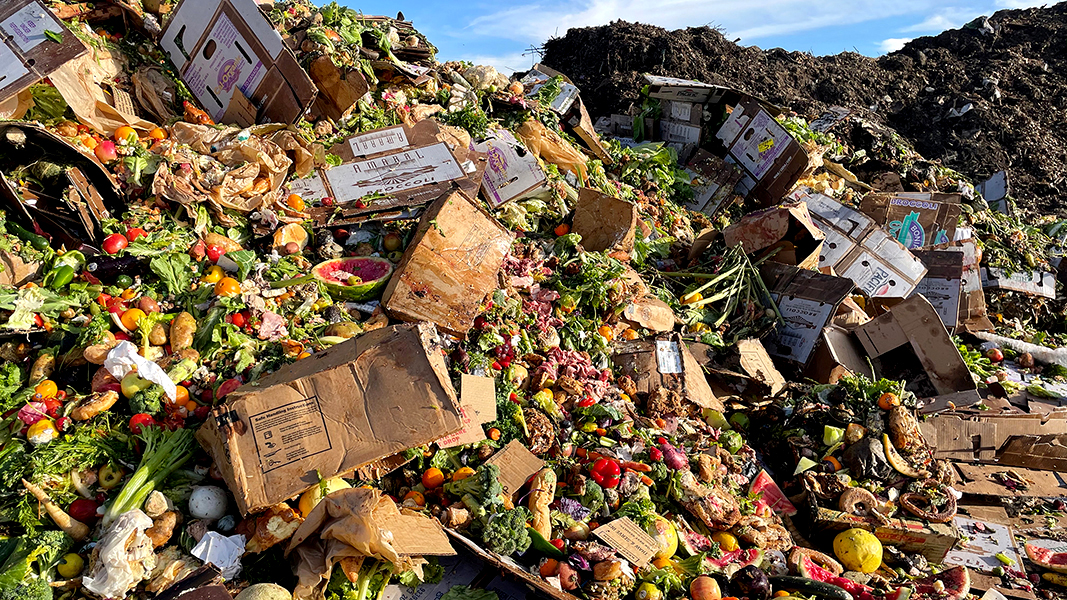Top: Photo courtesy of A1 Organics
Nora Goldstein
Having close to 45 years of reporting and writing about the A-to-Zs of organics recycling creates a “sniff test” of sorts to distinguish between new solutions that fall into the “been there, done that” category versus “woah, that is disruptive and has not been tried before.” In some cases, one sniff and you know this is a new twist on an old technology that still isn’t a good match for managing organic waste streams. In other cases, the sniff reveals that the stars are finally aligned to unlock a solution that we know works but the obstacles to adoption were out of our control.
Other instances grow out of further research that helps to refine our understanding or framing of the solution, e.g., additional benefits realized by adding recycled organics to soils. My personal favorite is when someone rearranges the puzzle pieces to reveal a strategy or an insight that finally enables successful adoption of a solution.
When determining whether something is too good to be true versus when it is good and true, I turn to truisms that have served me well over the years.
#1 No Silver Bullet
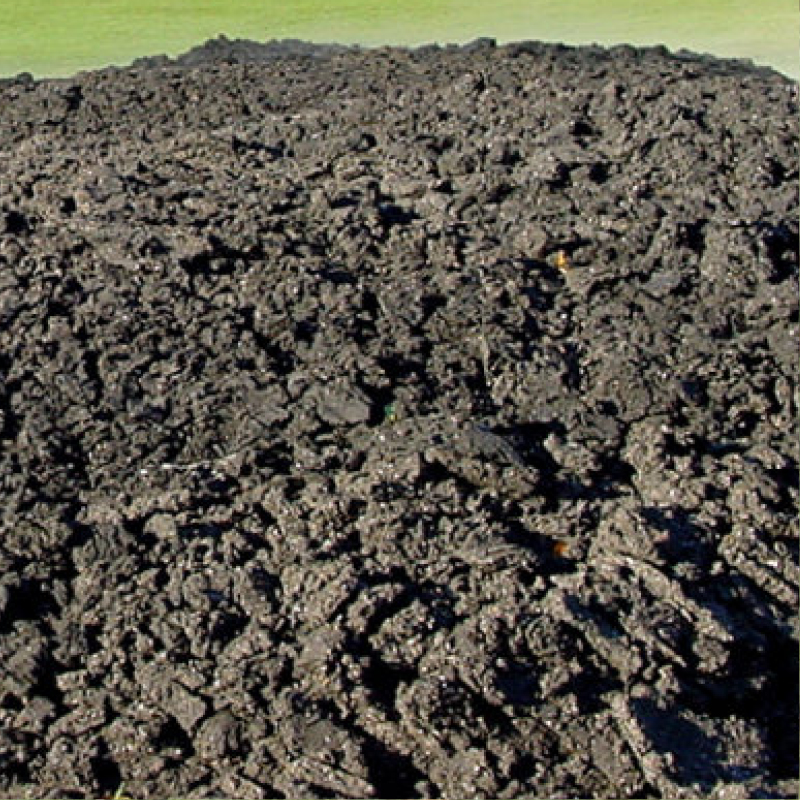
Treated biosolids prior to field spreading. Photo courtesy of North East Biosolids & Residuals Association
There is no silver bullet, i.e., every solution tends to come with downsides. Success happens when the upsides far outweigh the negative impacts of the downsides. Biosolids are a case in point. They are tightly regulated, have benefited from decades of research, and have proven time and again to perform well when applied to soils (measured in crop yields, remediation, binding of heavy metals, etc.). The downside is that pollutants and organic chemicals of concern are detected in biosolids. However, the vast majority of these constituents entered the wastewater plant via flame retardants, pharmaceuticals, cosmetics, etc. — a very direct pathway to exposure in the household, versus the significantly smaller concentrations that end up in the soils via biosolids.
#2 Contamination Is Easy To Get In And Hard To Get Out
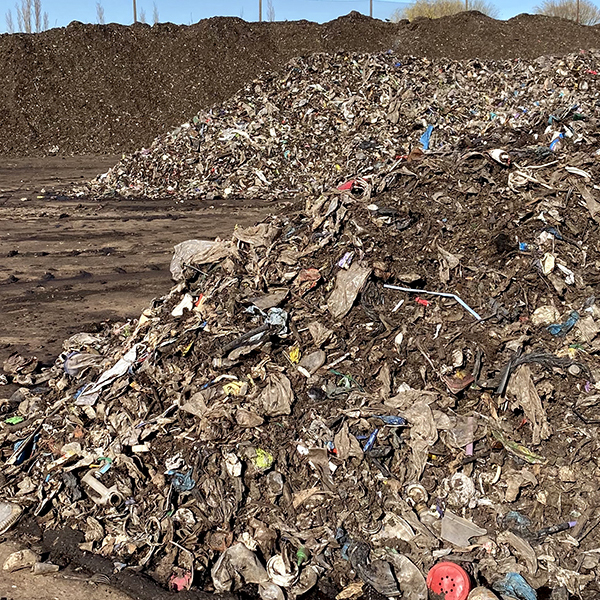
Once they are in the compost or digestate, contaminants are a challenge to remove. Photo courtesy of Z-Best
Once in the organic waste stream, contamination is difficult and expensive to remove. Keeping it out is equally difficult, as can be seen with public education and outreach related to source separating recyclables and organics. Mechanical separation continues to improve and be refined, most recently with the introduction of robotics and artificial intelligence. But that comes with a significant price tag. What we do know is that the majority of end markets, especially for compost, have little tolerance for contamination. This is also becoming apparent with digestate. The bottom line? Maximize source separation and deploy technology to bolster contaminant removal, starting at the source.
#3 Level Playing Fields Anchor Best Practices
Independent, third-party standards and certifications (think US Composting Council’s STA certification and BPI’s compostable products certification), performance-based regulations that ensure protection of public health and the environment, and agreed upon best management practices (to perform well) are all necessary to create a level playing field (i.e., everyone is playing by the same rules) that builds resilience in organics recycling infrastructure and end markets. Also important are continual improvement and ongoing refinement of test methods, process controls and related measures that build reliable performance.
#4 Disposal Bans, Ordinances, And Mandates Work
Look no further than states’ yard trimmings disposal bans put in place in the late 1980s, which essentially gave birth to today’s composting industry, as proof. Fast forward to January 1, 2022, when several laws and ordinances went into effect to keep food waste and other organics out of the landfill. The most notable is California’s SB 1383 law, which requires that 75% of all organic waste streams be diverted from the landfill by 2025. Also in effect as of January 1 are New York State’s Food Donation and Food Scraps Recycling Act and Hennepin County, Minnesota’s food waste recycling ordinance. The NYS law requires businesses and institutions that generate an annual average of two tons of wasted food per week or more to donate excess edible food, and recycle all remaining food scraps if they are within 25 miles of an organics recycler (composting facility, anaerobic digester, etc.). In Hennepin County, all cities are required to make curbside organics recycling service available to all households, through Ordinance 13. Cities with 10,000 residents or less will be given the additional option to meet the ordinance requirement through a drop-off location(s).
#5 End Markets Matter
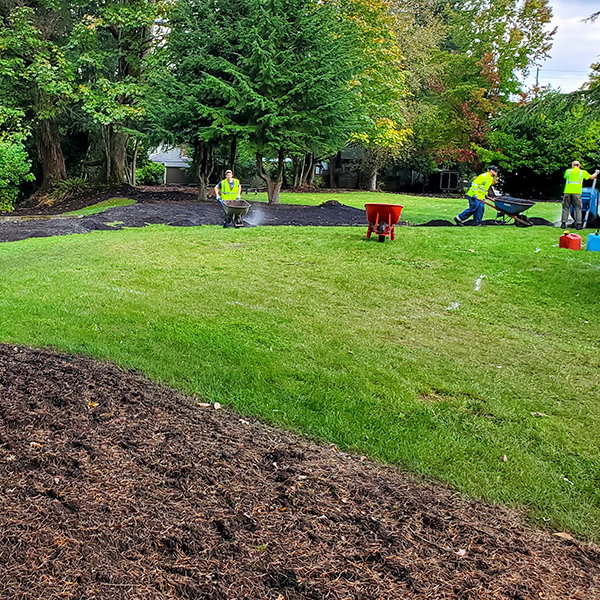
Strong end markets have to be a driver to pull clean organics through the composting facility or digester. Photo courtesy Cedar Grove
Success in organics recycling is ultimately measured by the strength of the end markets, not the tipping fees. In other words, profits from product sales must far outweigh profits from tipping fees to build resilience into organics recycling infrastructure. We aren’t there yet, but strong end markets have to be a driver to pull clean organics through the composting facility or digester. Government procurement programs can help build stronger markets.
#6 Happy Neighbors Are A Must
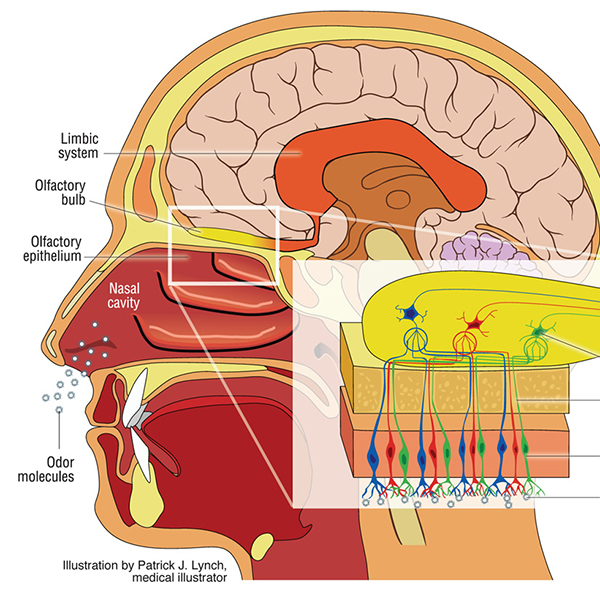
Human olfactory system
No organics recycling facility is sustainable when neighbors are negatively impacted. There is no question that organics recycling facilities bring along the potential to negatively impact a neighborhood, e.g., truck traffic, odors, excess nutrient discharges, etc. What we have learned over the years is that being a good neighbor makes an organics recycling facility resilient. That requires an ongoing investment in time and money to ensure that odors are managed well and when they are not, to address them immediately. Neighbors also need to benefit from organics recycling operations, whether it is access to the electricity and RNG being generated, or the compost. A statement I made years ago (not to everyone’s liking, to be sure), is that there is no good excuse for a poorly run organics recycling facility. Odors can be managed successfully. If a manure lagoon is going to be covered to capture the methane for renewable natural gas, the liner cannot leak and pollute groundwater. And the digestate must be managed responsibly and not disperse odors and pollute surface waters.
#7 Behavior Change Is Hard But Not Impossible
Getting people to change their behavior has been an ongoing challenge for organics recycling programs. What helps is when households can save money, e.g., by reducing the amount of food they throw away, or paying less for trash collection. Solutions to achieve our end goals (keep organics out of landfill and produce high quality recycled organics) have to be convenient and not confusing. One thing the pandemic has taught us is that people like compost and will buy it to grow food and nice flowers. Closing that loop by capturing their organics is a logical next step (we hope).
#8 Compost Works And Saves Money
Recently, it seems I’ve been sending links frequently to two BioCycle articles — “Can Increased SOM Reduce Crop Insurance Payouts?” and “Why Regenerative Agriculture Needs Recycled Organics” — in response to why compost is integral to regenerative and climate-resilient agriculture. The truism is that compost helps make soils resilient and regenerative — and can save money on crop insurance!
#9 The Newbies Help The Veterans, And Vice Versa
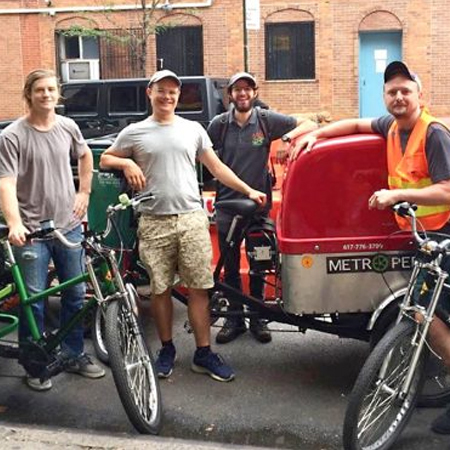
Young professionals and entrepreneurs are bringing fresh ideas, great energy and innovations to our organics recycling universe. Photo courtesy Reclaimed Organics
I am continually amazed and energized by the ideas and tools that young professionals and young entrepreneurs are bringing to our organics recycling universe. They are innovating around food scraps collection, apps to assist in source separation, deployment of social media to accelerate outreach and education, inventions to facilitate food recovery and more. While they are advancing our industry, many also are turning to the veterans for advice, guidance and reassurance.
#10 Good Things Take Time
In 2022, BioCycle is celebrating its 63rd year of publication (albeit digitally since 2020). In 2009, and again in 2019, when we were putting together our 50th and 60th Anniversary Editions respectively, I was stunned by how articles from decades ago were as relevant to the current times as when they were originally published. At first, I found it discouraging, feeling like no progress was being made. But in reality, those articles were profiling the pioneers who showed the possible, and paved the way to realize the potential.


